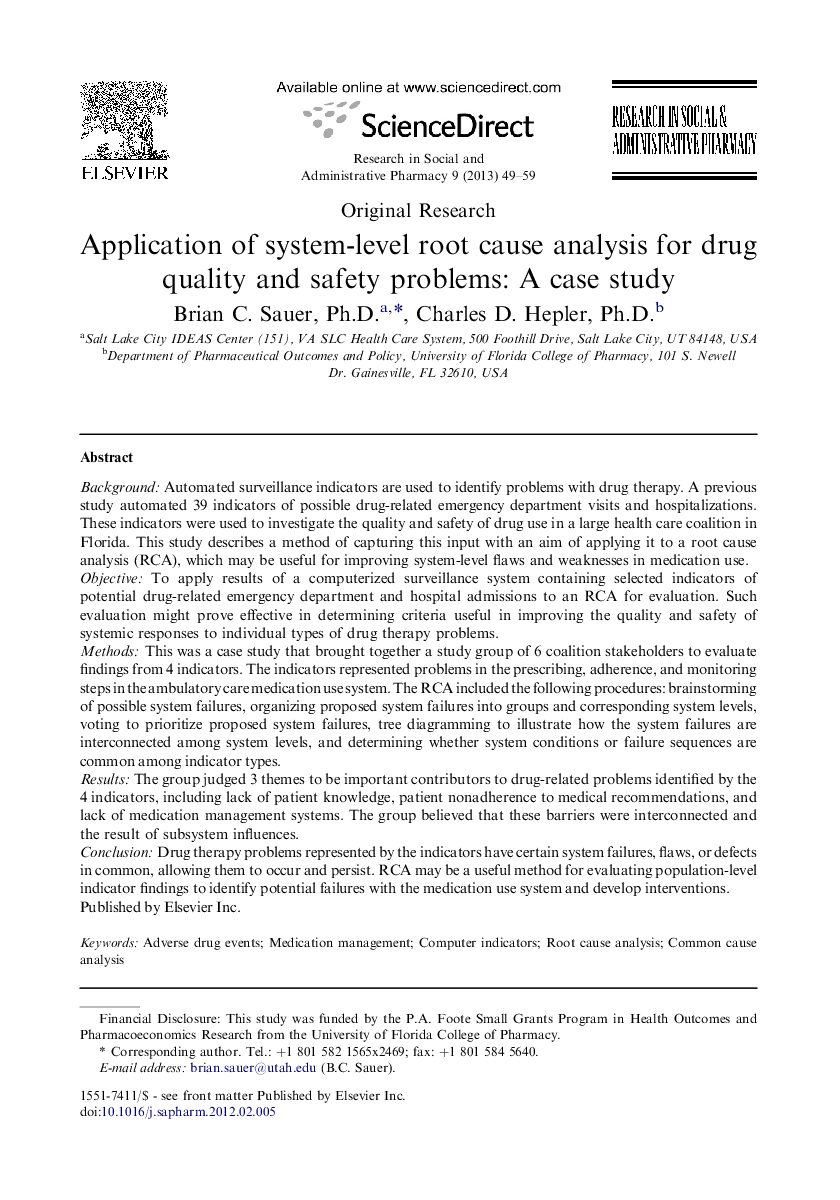| Article ID | Journal | Published Year | Pages | File Type |
|---|---|---|---|---|
| 2508635 | Research in Social and Administrative Pharmacy | 2013 | 11 Pages |
BackgroundAutomated surveillance indicators are used to identify problems with drug therapy. A previous study automated 39 indicators of possible drug-related emergency department visits and hospitalizations. These indicators were used to investigate the quality and safety of drug use in a large health care coalition in Florida. This study describes a method of capturing this input with an aim of applying it to a root cause analysis (RCA), which may be useful for improving system-level flaws and weaknesses in medication use.ObjectiveTo apply results of a computerized surveillance system containing selected indicators of potential drug-related emergency department and hospital admissions to an RCA for evaluation. Such evaluation might prove effective in determining criteria useful in improving the quality and safety of systemic responses to individual types of drug therapy problems.MethodsThis was a case study that brought together a study group of 6 coalition stakeholders to evaluate findings from 4 indicators. The indicators represented problems in the prescribing, adherence, and monitoring steps in the ambulatory care medication use system. The RCA included the following procedures: brainstorming of possible system failures, organizing proposed system failures into groups and corresponding system levels, voting to prioritize proposed system failures, tree diagramming to illustrate how the system failures are interconnected among system levels, and determining whether system conditions or failure sequences are common among indicator types.ResultsThe group judged 3 themes to be important contributors to drug-related problems identified by the 4 indicators, including lack of patient knowledge, patient nonadherence to medical recommendations, and lack of medication management systems. The group believed that these barriers were interconnected and the result of subsystem influences.ConclusionDrug therapy problems represented by the indicators have certain system failures, flaws, or defects in common, allowing them to occur and persist. RCA may be a useful method for evaluating population-level indicator findings to identify potential failures with the medication use system and develop interventions.
